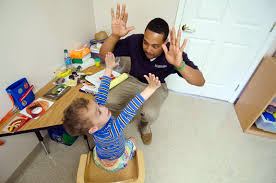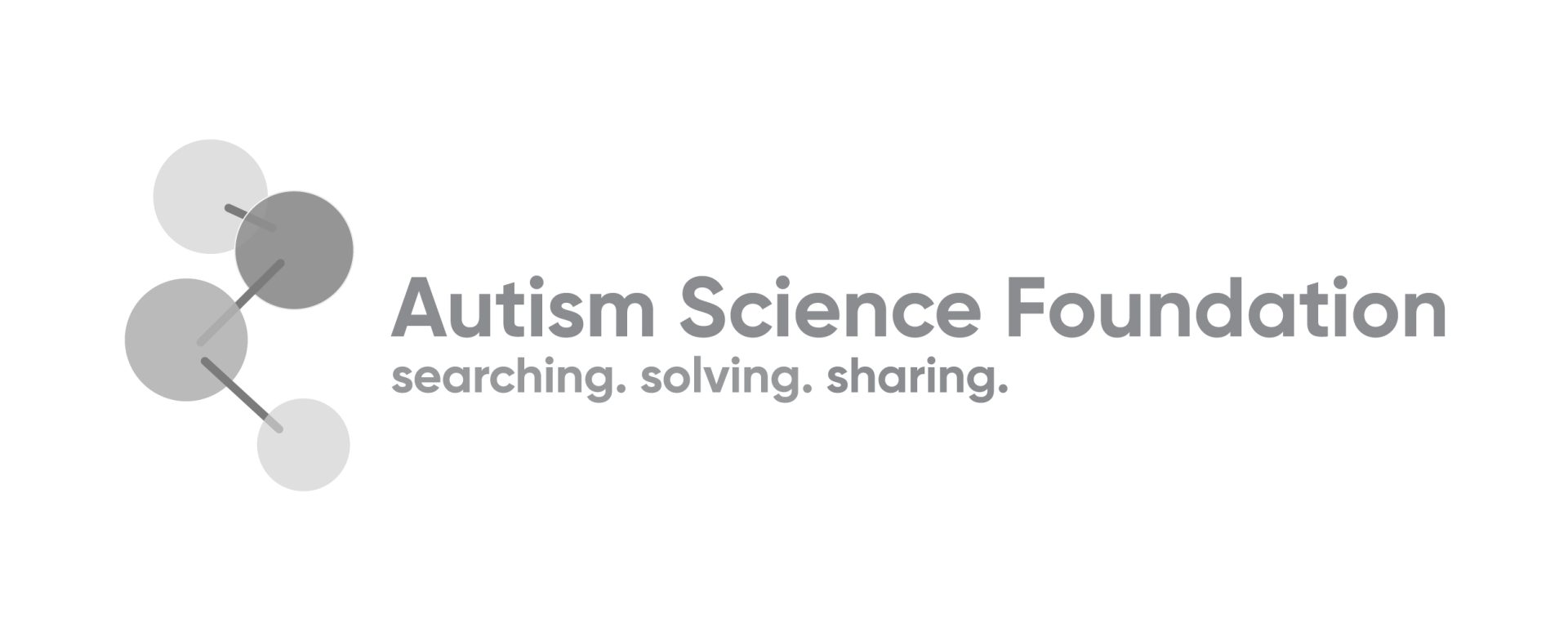The Facts Behind Behavioral Analysis
a guest blog post by Molly Reilly, BCBA

The term ABA, which means Applied Behavior Analysis, has become one of the most misunderstood if not controversial terms, particularly regarding its use in the treatment of Autism Spectrum Disorder (ASD). Recently, there have been some questions about ABA. What it is, if it is helpful for individuals with Autism ASD, how do scientists know, can it be harmful, and what is the intent of ABA for behaviors related to ASD? Molly Reilly, a Board Certified Behavior Analyst (BCBA) from Connecticut, graciously helped explain the fundamentals of ABA with the intention of clarifying the intended use and misconceptions.
She will begin by defining the practice of ABA. Many people mix up “ABA” with one methodology within ABA, called Discrete Trial Training, or DTT. Next she will discuss the evolution of ABA interventions including the integration of findings from developmental psychology to create Naturalistic Developmental Behavioral Interventions (NDBIs). These more naturalistic interventions are based in the principles of ABA, but take a more developmental approach. Finally, she’ll address the concept of punishment and why it should not be used, citing several influential publications in ABA. Thus, the purpose of this blog is to define ABA, explain how ABA got its start, and how it has evolved into the types of interventions now used in ASDs.
______________________________________________________________________________
“Applied Behavioral Analysis (ABA)…is based on the work of Dr. O. Ivar Lovaas” (Levinstein, 2018, p. 80).The preceding quote illustrates the common misconception that ABA is a single therapeutic approach. The truth is that ABA it is an entire scientific discipline that examines the effects of the environment on behavior with the aim of systematically applying theprinciples of Behavior Analysis to change socially significant behavior (Cooper, Heron, & Heward, 2007). In fact, you can get a graduate degree in ABA! It’s quite complex. ABA has been and continues to be applied to a plethora of issues ranging from smoking cessation (Romanowich & Lamb, 2015), to increasing activity levels (Cohen, Chelland, Ball, & LeMura, 2002), to improving employee’s customer service behaviors (Rice, Austin, & Gravina, 2009).

The relationship of ABA approaches to ASD
ABA is based on the concept that behavior is influenced by an individual’s environment and their interaction with the environment. This is important because based on years of research in infants, it is clear that babies learn by formulating hypotheses and then testing these hypotheses through their interactions with their environment (Saffran, Aslin, & Newport, 1996). This learning and skill development is better when it happens in the context of social interactions, so environment and response to that environment matters (Kuhl, Tsao, & Liu, 2003; Yurovsky. Boyer, Smith, & Yu, 2013). Research also tells us that across ASD and typical development, skills serve as foundations for more advanced skills. Joint attention, for example, is related to subsequent language development (Carpenter, Nagell, & Tomasello, 1998). Therefore, natural sequences of skill development began to be taken into consideration when developing treatment goals. Specifically, skills are taught to children with ASD in the same developmental sequence observed among typically developing children and special emphasis is placed on skills that are foundational to the development of more advanced skills; an example of this would be teaching joint attention to a preverbal child because joint attention is a precursor to language development. One skill builds upon another, so fundamental skills are taught first, and then it gains in complexity.
Discrete Trial Training – what it is, what it is not, and what that means for the term “ABA”
Unfortunately, when the average person hears ABA, they think of a child seated at a desk in a sterile room with an adult showing them flashcards and feeding them M & Ms. This grossly inaccurate stereotype of ABA was likely derived fromLovaas’ landmark 1987 study in which he utilizedDTT to teach children with ASD (Lovaas, 1987[i]). DTT is an intensive one-to-one intervention conducted in a highly structured environment that applies basic principles of operant conditioning. DTT aims to teach appropriate behaviors by breaking a task down into a number of small discrete trials and then training the client to master each progressive step until they can complete the entire task. Each discrete trial consists of the following components: cue, prompt, response, consequence and inter-trial interval. A cue is a stimulus in the environment signaling the availability of reinforcement contingent on a particular response. A prompt is assistance provided to help the student engage in the target behavior Response refers to the behavior that occurs following the cue. Consequence is the event following an individual’s response (The Inter-trial interval is a brief pause between trials during which teacher typically records data and sets up materials for the next trial (Lovaas, 1987; Smith, 2001). An example of how the five components may look in a DTT teaching trial is depicted in the table below
| Cue | Teacher places 3 flashcards of animals on table and verbally instructs student to “touch dog” |
| Prompt | Teacher points to the flashcard of a dog |
| Response | Student touches the flashcard of a dog |
| Consequence | Teacher praises student by saying “nice job touching dog!” and gives the student a skittle. |
| Inter-trial interval | Teacher records data and places three different flashcard on the table |
Lovaas (1987) published findings from his seminal study in which children with ASD exhibited striking improvements following intense one-to-one DTT training. Specifically, Lovaas (1987) reported that 47% of participants who received 40 hours per week of one-to-one DTT for two or more years achieved normal educational and intellectual functioning. The remarkable improvements reported by Lovaas (1987) demonstrated the effectiveness of applying these type of techniques such as prompting and reinforcement to teach skills to young children with ASD. This publication is perhaps the most well known study of any ASD intervention study to date.
The truth is that ABA started long before Lovaas published his dramatic results. In fact, the foremost peer-reviewed academic journal for ABA, The Journal of Applied Behavior Analysis,(JABA) was first published in 1968 – and there were publications even before 1968. The debut issue of this journal featured an article by Baer, Wolf, and Risley (1968) advising that ABA should be among many things to promote generalization of skills. This does not mean ABA is exclusive to DTT. Clinicians want behaviors to be learned in a variety of environments, not just the clinic. A therapist teaching a child to identify a cow by repeatedly presenting the child with a flashcard of a cow while they are seated across from each other at a table in a distraction free room will not generalize because it is likely that the child will only be able to identify a cow when they are shown a flashcard picture of a cow by their therapist at the desk. In order for the skill of labeling a cow to be considered generalized,the child should be able to identify a picture of a cow in a book with his sister, a cow on the farm with his peers, and a stuffed animal as a cow at home with his grandmother, etc.
To summarize, DTT can be quite useful as an initial strategy to introduce a basic skill or concept (especially for individuals who are unable to otherwise learn in a less structured setting). Yet, behavior ultimately needs to be shaped and adapted to naturalistic contexts and, for this, other strategies are needed.
Naturalistic Developmental Behavioral Interventions (NDBIs) – making principles of ABA accessible in a variety of settings across ages

Researchers, noting the limitations of DTT, modified the highly structured DTT approach because each person has a different motivator and needs to learn in a variety of settings. It is important to state that NDBI are based in ABA and therefore incorporates a number of behavioral techniques including those that precede or motivate and those that reinforce or support behavior. Some of the main differences between DTT and NDBIs are listed in the table below. They include child choice and interests rather than teacher-initiated sessions. They also include interspersal of tasks incorporating skills that are already in the child’s repertoire. Researchers like Dunlap (1984) found that interspersing maintenance tasks with acquisition tasks led to faster achievement of skills as well as more positive affect in comparison to presenting only acquisition tasks. This decreases frustration and increases motivation.
As mentioned earlier, skills learned in one setting may not transfer to another, so one major criticism of DTT has been that something learned in a clinic does not necessarily help in outside settings (McGee, Almeida, Sulzer-Azaroff, & Feldman, 1992). Therefore, NDBIstake place in the natural environment; instead of teaching sessions occurring in distraction free room, teaching sessions occur in a variety of settings such as the playground, home, and school. They also use reinforcers that are more closely related to the behavior. For example,rather than giving a child an m&m for saying ball when shown a picture of a ball, the child is given a ball to play with upon saying ball after you hold up a toy ball. Naturalistic developmental behavioral interventions teach individuals that are present in the child’s daily life (e.g. caregivers, peers, teachers) to implement teaching strategies in order to promote generalization. Bruinsma, Minjarez, Schreibman, and Stahmer (2019) identified and described common elements of NDBIs including: Environmental arrangement to promote interactions and learning, the use of natural and direct reinforcers as well as other motivational procedures, utilization of prompting and prompt fading when teaching new skills, use of turn-taking within teaching episodes, the use of modeling, adult imitation of the child’s language, play, or body movements, broadening the child’s attentional focus, and perhaps most importantly, an emphasis on child interests and initiations (e.g. child choice, following the child’s lead, etc.).
As demonstrated by the information provided above, naturalistic behavioral interventions clearly differ from DTT. Schreibman and Ingersoll (2005) and Delprato (2001) discuss a number of important ways in which naturalistic behavioral strategies differ from more structured behavior techniques and these differences are illustrated in the following table:
| Teaching opportunities | Teacher-initiated | Child-initiated |
| Learning environment | Structured learning environment (e.g. Sessions are conducted at a table) | Natural environment sessions are conducted various locations in the natural environment including home, school, community, or workplace |
| Materials | Selected by teacher and remain the same within an activity | Selected by the child and frequently change within an activity |
| Reinforcers | Reinforcers are unrelated to the target response (e.g. skittle for saying ball when shown a flashcard picture of a ball) | Reinforcers are natural and directly related to the target response (e.g. access to a toy ball for saying ball when shown a ball) |
| Selection of target behaviors | Behaviors selected by practitioners for intervention with the goal of making the child appear as “normal” as possible. | Behavior selected for intervention chosen by a team including the parents and individual with possible with the goal of the behavior being socially significant. |
| Skill presentation | A single acquisition skill is taught in isolation through the repetition of teaching trials. | Multiple skills are targeted in a therapy session including the interspersal of maintenance and acquisition tasks |
| Reinforcement | Only correct responses or successive approximations lead to reinforcement. | Attempts to respond as well as correct responses lead to reinforcement. |
Punishment – not what you think it is
The technical definition of punishment in terms of ABA is any stimulus that is presented after a behavior occurs that reduces the behavior. For example, if instructing Tommy to “stop” when he runs into the street results in him no longer running in the street, then the instruction “stop” was punishment. But there have been reports of other types of punishments that include aversive techniques, such as aggression, verbal abuse, or electroshock. Some people with ASD have claimed negative long term consequences following ABA, owing the distress aversive techniques that were originally used in Lovaas’ early studies. However, aversive techniques were determined to be harmful and removed from DTT and other ABA treatments for ASD (reference needed here). Unfortunately, given this history, many individuals with ASD continue to associate ABA/DTT to any influence that discourages behavior that is not seen as dangerous. here have also been comparisons between gay conversion therapy and ABA used for ASD. The professionals highly discourage punishment in any form, in fact, you can read the specific language below:
The behavioral analyst certification board’s stance on punishment
The BACB specifically addresses the use of punishment in its Professional and Ethical Compliance Code for Behavior Analysts in section 4.08, which states:
4.08 Considerations Regarding Punishment Procedures. (a) Behavior analysts recommend reinforcement rather than punishment whenever possible. (b) If punishment procedures are necessary, behavior analysts always include reinforcement procedures for alternative behavior in the behavior-change program. (c) Before implementing punishment-based procedures, behavior analysts ensure that appropriate steps have been taken to implement reinforcement-based procedures unless the severity or dangerousness of the behavior necessitates immediate use of aversive procedures. (d) Behavior analysts ensure that aversive procedures are accompanied by an increased level of training, supervision, and oversight. Behavior analysts must evaluate the effectiveness of aversive procedures in a timely manner and modify the behavior-change program if it is ineffective. Behavior analysts always include a plan to discontinue the use of aversive procedures when no longer needed. (Behavior Analyst Certification Board, 2014)
NDBss on Punishment
The NDBI handbook (Bruinsma et al, 2019) discusses the disadvantages of punishment including:
Punishment teaches a child what not to do but not necessarily what to do. Therefore, punishment is not a stand-alone procedure because it should be accompanied with teaching another response. For example, an educator says “no” to Francie when she wiggles her hands in front of her face (the “no” serves as a punisher because she stops the finger wiggling), but Francie needs something else to do with her hands. Thus, the educator might reward Francie with verbal praise for using her fingers to do a puzzle or clap her hands to music. Finally, using only punishment procedures to reduce challenging behavior can lead to poor generalization, as behavior change only occurs when the punisher is present. Generally, NDBIs favor the use of antecedent and rewards strategies and limit the use of punishers (p. 199).
Putting it all together
Thanks to scientific advances in both ASD and atypical and typical child development, clinicians have been adapting, updating, and developing behavioral interventions for ASD, using the principles of ABA as a guide. ABA does not need to be synonymous with any particular procedure or strategy within its domain. Punishment such as pain-inducing stimulus like electroshock or other physical abuse is not tolerated and should never be used. However, the principles of ABA have been used to lead to demonstrated improvements in functioning in people with ASD. There is always room for improvement in tailoring each type of intervention with each person. Below are some real life vignettes of the differences between DTT and NDBI

What happens in real life – some examples of ABA in action
Discrete Trial Training:
Mario is a 32-month-old boy with an ASD who is currently working on identifying letters. He is his seated at a small table and chair with his therapist who places three letter flashcards on the table (A, F, and P) and verbally instructs him to “touch the letter A”. Mario touches the flashcard with the letter “A” and his therapist reinforces his behavior by saying “good job!” and giving him a skittle to eat. The therapist then begins setting up for another trial by placing three different letter flashcards on the table.
NDBI:
Billy is a 36-month year old boy with an ASD who is currently imitating phrases and loves playing with cars. His team is currently teaching him to ask initiate social interactions by asking “what’s that?” and to work on this skill his therapist places one of his favorite red fire truck in a brown bag prior to the visit and when she arrives she takes out the bag, shakes it, and models the question “what’s that?” Billy imitates “what’s that?” and his therapist excitedly takes out the firetruck while stating “red fire truck!” Billy excitedly takes the red fire truck and drives it down a garage ramp. His therapist follows him to the ramp, picks up a blue car, and sends it down the ramp while saying zoom zoom! Billy giggles, picks up the blue car, and drives it down the ramp while saying, “zoom!”. His therapist picks up the red fire truck and blue car, holds them both up to Billy and asks: “Red fire truck or blue car?” Billy responds “red fire truck” and his therapist rewards his response by giving him the red fire truck to play with.
Alexa is a 26-month-old girl diagnosed with ASD and currently uses one to two word phrases to communicate. One morning she walks up to her toy shelf retrieves a closed bin containing musical instruments. Alexa sits down tries to open the container but when she is unable to open the container her mother prompts her to request help by holding out her hand and asking “Need help?” Alexa hands her mother the container and says, “Help”. Her mother immediately opens the container while saying “open” and then hands the open container to Alexa who eagerly takes out a bright pink maraca and shakes it, her mother narrates Alexa’s actions by saying “shake shake shake” and then takes a blue maraca and imitates Alexa’s shaking. Alexa, smiles at her mother and says, “shake shake shake” while shaking her maraca. Alexa’s mom again joins Alexa shaking her maraca while saying “shake shake shake” and the two smile and giggle. Alexa’s mother then holds the maraca above her head and says “shake high!” in a high pitched voice and then continues to shake the maraca and she bends down and says, “shake low” in a deep voice. Alexa smiles at her mother’s silly actions and imitates shaking her maraca up high while saying “shake high” and then shaking her maraca down low while saying “shake low”.
References:
Baer, D.M., Wolf, M.M., & Risley, T.R. (1968). Some current dimensions of applied behavior analysis.Journal of Applied Behavior Analysis. 1, 91-97.
Behavior Analyst Certification Board. (2014). Professional and ethical compliance code for behavior analysts. Littleton, CO: Author.
Bruinsma, Y., Minjarez, M., Schreibman, L., and Stahmer, A.C. (2019). Naturalistic Developmental Behavioral Interventions for Autism Spectrum Disorder.Baltimore, MD: Paul H Brookes Publishing.
Carpenter, M., Nagell, K., & Tomasello, M. (1998). Social cognition, joint attention, and communicative competence from 9 to 15 months of age. Monographs of the Society for Research in Child Development, 63, 1-142.
Cohen, S. L., Chelland, S., Ball, K. T., & LeMura, L. M. (2002). Effects of fixed ratio schedules of reinforcement on exercise by college students. Perceptual and motor skills, 94(3_suppl), 1177-1186.
Cooper, J.O., Heron, T.H., & Heward, W.L. (2007) Applied Behavior Analysis (2nd ed.). Upper Saddle River, NJ: Pearson Education Inc.
DelPrato, D.J. (2001). Comparisons of discrete-trial and normalized behavioral language intervention for young children with autism. Journal of Autism and Developmental Disorders, 31, 315–325.
Dunlap, G. (1984). The influence of task variation and maintenance tasks on the learning and affect of autistic children. Journal of Experimental Child Psychology, 37(1), 41-64.
Kuhl, P. K., Tsao, F. M., & Liu, H. M. (2003). Foreign-language experience in infancy: Effects of short-term exposure and social interaction on phonetic learning. Proceedings of the National Academy of Sciences, 100, 9096–9101.
Levinstein, Kathleen P. (2018) “Distorting Psychology and Science at the Expense of Joy: Human Rights Violations Against Human Beings with Autism Via Applied Behavioral Analysis,” Catalyst: A Social Justice Forum: Vol. 8 : Iss. 1 , Article 5.Available at: https://trace.tennessee.edu/catalyst/vol8/iss1/5
Lovaas, O. I. (1987). Behavioral treatment and normal educational and intellectual functioning in young autistic children. Journal of Consulting and Clinical Psychology.
McGee, G. G., Almeida, M. C., Sulzer-Azaroff, B., & Feldman, R. S. (1992). Promoting reciprocal interactions via peer incidental teaching. Journal of applied behavior analysis, 25(1), 117–126. doi:10.1901/jaba.1992.25-117
Rice, A., Austin, J., & Gravina, N. (2009). Increasing customer service behaviors using manager-delivered task clarification and social praise. Journal of Applied Behavior Analysis, 42(3), 665-669.
Romanowich, P.& Lamb, R. (2015). The effects of fixed versus escalating reinforcement schedules on smoking abstinence. Journal of Applied Behavior Analysis, 48(1), 25-37.
Saffran, J.R., Aslin RN, & Newport EL (1996). Statistical learning by 8-month-old infants. Science, 274(5294), 1926–1928.
Schreibman, L. & Ingersoll, B. (2005). Behavioral interventions to promote learning in individuals with ASD. In F. Volkmar, A., Klin, R. Paul, & D. Cohen (Eds.), Handbook of ASD and pervasive developmental disorders, Volume 2: Assessment, interventions, and policy (pp. 882-896). New York, NY: Wiley.
Schreibman, L., Dawson, G., Stahmer, A. C., Landa, R., Rogers, S. J., McGee, G. G., … & Halladay, A. (2015). Naturalistic developmental behavioral interventions: Empirically validated treatments for autism spectrum disorder. Journal of Autism and Developmental Disorders, 45(8), 2411-2428. doi:10.1007/s10803-015-2407-8
Smith, T. (2001). Discrete trial training in the treatment of autism. Focus on Autism and Related Disorders, 16, 86-92.
Yurovsky, D., Boyer, T. W., Smith, L. B., & Yu, C. (2013). Probabilistic cue combination: Less is more. Developmental Science, 16, 149–158.

